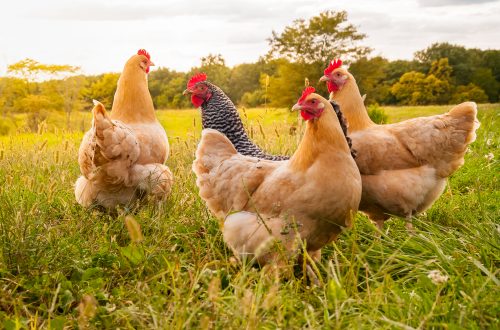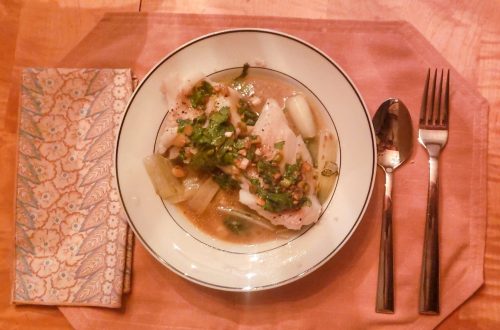
The Quest for Protein: Making a Meal of Vegetables
What a great time for vegetable lovers, compared to the situation when I was growing up. Back then, vegetables were mostly an afterthought in meals. Many times, they were canned versions, although my mother took advantage of the locally available fresh corn and peas and would freeze them fresh for future meals. Needless to say, I didn’t grow up a vegetarian. Now, in my area north of Boston, we have thriving farmers markets and specialty stores close by, and the supermarkets are doing a better job of vegetable acquisition and display. What that means is the availability of a wide variety of produce to include in our recipes.
That’s good news because, lately, I’m finding that I’m preparing more vegetable-only meals. While locating interesting recipes is never a problem, it’s a new challenge for me to find ways to make a favorite vegetable side into a main dish that’s sufficient to supply flavor, nutrition and a full stomach. Adding some meat is always an easy way out. After all, what’s a beef stew but merely chopped up pot-roast vegetables and meat with a little extra liquid? Of course, that’s an oversimplification. But lately, many of us are looking for ways to cut down on our meat consumption. Turns out it’s not that difficult.
Plant-based protein
First off, you need to pay attention to getting enough protein in your meals. Humans need between 55 and 80 grams of protein a day, so a good diet should address those issues. However, most vegetables don’t have sufficient protein content, and we don’t want to require eating a bucket full of vegetables just to satisfy our protein needs. Some simple recipe additives could solve the problem. Good sources of protein include eggs, dairy, beans and other legumes (chickpeas, lentils, and peas), and nuts. Then, of course, there’s soybeans, an excellent source of plant-based proteins and eight of the essential amino acids. Soybeans are roughly one-third protein by weight (raw) and are the raw material for tofu, another protein and calcium source. And then there are protein-rich grains such as quinoa, buckwheat, oats, farro, and spelt. And don’t forget dairy and eggs. A good dose of feta or cheddar cheese or simply garnishing with some hard-boiled eggs will provide good protein.
You can also go for whole-grain pastas, but I’m staying away from those carb-loaded pasta dinners, for the most part. And I’m not a fan of tofu. On the other hand, I’ve come to appreciate vegetable-centric meals that contain grains, beans, or other legumes. Take this Harira that we enjoyed for dinner this week – a Moroccan spiced vegetable soup with simple carrots, celery, cilantro, and tomatoes, with chickpeas, lentils, and a large egg for extra protein. For flavor, it calls for plenty of spices plus some harissa for added spice and the juice of a couple of lemons. Consider these ideas from the New York Times: beet and lentil salad with cheddar and a one-pot braised chard with gnocchi, peas, and leeks. Or this Times recipe with Punjabi-style red beans with cream. As the writer points out, you can switch to different beans, add cheese, or serve over rice or with flour tortillas or buttered toast, in a pinch.
Fruit and nuts
These dishes don’t need to be boring. To add a little extra flavor profile and crunch, consider adding some nuts or seeds. In Asian cuisine, where vegetables frequently are a central focus, the greens are often topped with chopped peanuts. Other cuisines use pepitas, sesame seeds, sunflower chia, or flax. You could consider mixing up your own seed sprinkle to add to dishes. Also think about adding dried or chopped fruits – not for protein, but for flavor. North African dishes often feature dried apricots, raisins, pomegranates, or figs. How about prunes, currants, or dried cherries or cranberries? Or pineapple, as in this Southern dish, Cornwallis yams. Who knew that George Washington loved pineapple? I learned that from cookbook author James Villas.
Opportunities abound. It’s spring, and the early vegetables are starting to appear. We all need to eat our vegetables, so why not make it an interesting experience? Here are a few recipes:
What about your own creations? Do you have a favorite you’d like to share?
Pictured is Pea and Goat Cheese Tart. Please let me know if you would like the recipe.
To comment, please click on “Read in Browser” or on the headline to view the blog on the website. You can log in and comment at the end of the blog to share your thoughts and start a discussion.
If you’d like to share the blog, click on the Facebook icon or one of the others. Thanks!




